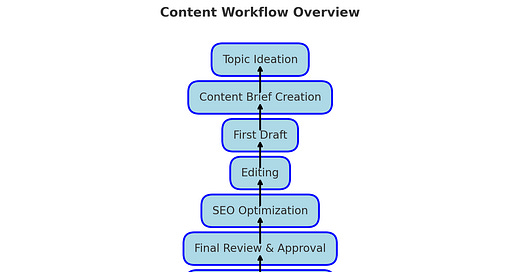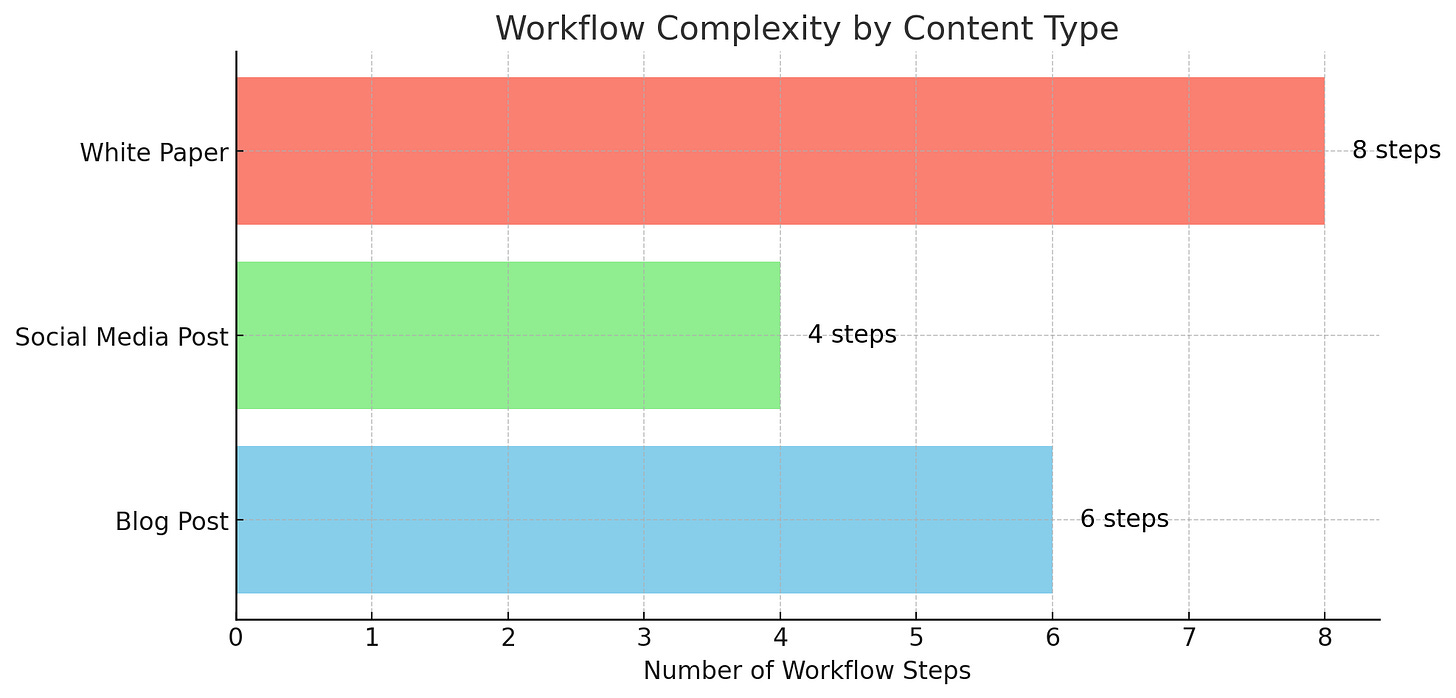Creating great content consistently is a tough goal we all want to achieve. But without a solid workflow, you may struggle with missed deadlines, unclear roles, and inconsistent quality. I’m in the process of building one and I wanted to share a bit from what I’ve learned so far.
Why is a content workflow important?
A well-defined content workflow breaks your process into manageable steps. It clarifies the who, what, and when, for everyone to know their role. This leads to fewer bottlenecks.
For example, if you're creating a blog post. Without a clear workflow, your writer might submit a draft, only to have it bounce between editors for days. With a clear workflow, the post moves smoothly from writing to editing to final approval, with each team member knowing exactly what they need to do.
How to build your workflow: step by step
1. Set clear goals and identify your audience
Are you aiming for brand awareness, lead generation, or customer education? Your goals will shape your content types and workflow.
For instance, if you're focused on brand awareness, you might create more top-of-funnel content like blog posts and social media updates. This content typically requires a simpler workflow with fewer approval stages than, say, a detailed white paper for lead generation.
2. Define team roles
Clearly outline who's responsible for each stage of content creation. Your team might include:
Content strategists who plan topics
Writers who create the first draft
Editors who refine the content
Designers who add visuals
SEO specialists who optimize for search engines
Managers who give final approval
I mean, this is the dream lineup, However, this isn't always possible, particularly when resources are limited. In such cases, the lineup typically looks like this:
Content Manager ==> Writer ==> Content Manager (editing) ==> Designer ==> Content Manager (publishing).
Dream lineup or not, by defining these roles, you ensure that no one is waiting for someone to take action.
3. Choose your content types and frequency
Decide what types of content you'll create and how often. This could include:
Blog posts
social media updates
videos
podcasts
or email newsletters
Each content type might need a slightly different workflow.
For example, a social media post might only need one round of review, while a long-form blog post might require multiple editing stages and fact-checking.
4. Develop your process
Now, map out the specific steps your content will go through. A basic workflow might look like this:
Topic ideation
Content brief creation
First draft writing
Initial editing
SEO optimization
Final review and approval
Publishing and promotion
Adjust this process based on your team's structure, and the content types. The goal is to make each step clear and actionable.
5. Use tools to automate and organize
Use technology to make your workflow smoother. Tools like Trello or Notion can help you manage your content pipeline. I use both regularly and they’re really awesome.
Notion's flexible database system allows you to create a robust content calendar where you can visualize your schedule, assign tasks, and track progress all in one place. You can set up linked databases for content ideas, drafts, and published pieces. I think Notion takes some getting used to, but if you do not have the time to learn, Trello is a good alternative for its simplicity.
Trello's board and card system is also perfect for managing your content workflow. Create lists for different stages of your process (e.g., 'Ideas', 'In Progress', 'Editing', 'Ready to Publish') and move cards as you progress. Trello's automation features can send notifications to team members when it's their turn to work on a piece of content. And I’m currently testing a few Trello power-ups for more automation.
6. Regularly audit and make adjustments
Your workflow isn't set in stone. Monitor its performance, and be ready to make changes. Are deadlines being met? Is the content quality consistent?
Some practical tips for getting started
Start simple: Begin with a basic workflow and add complexity as needed.
Communicate clearly: Ensure everyone understands the workflow and their role in it.
Set realistic deadlines: Consider the time needed for each step and include a buffer for unexpected delays.
Use templates: Create templates for briefs, outlines, and content formats to save time.
Encourage feedback: Regular team check-ins can help quickly identify and solve issues in your workflow without affecting the work.
And that’s a wrap! This is almost 800 words, and my goal is to always keep everything at a maximum of 500 words. I’ll stick to that in the next one 😅.
Thanks for reading!






